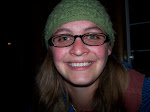Many of you have heard about the cholera outbreak in Haiti and the increasing number of people who have become sick or died. There have now also been confirmed reports and deaths in the Dominican Republic; some of these cases have been as close as communities around San Juan, the closest city to me. After decades without cholera, Hispaniola is ill prepared to deal with such an epidemic. There are many misconceptions that Dominicans have in general about Haitians and particularly about cholera and the Haitian population. Because there hasn’t been cholera in Hispaniola for so long most Haitians and Dominicans (particularly those from rural areas) didn’t know what it was or where it comes from. The Dominican response, has been to limit Haitians from crossing the border, although this has unfortunately involved sending some Haitians who have lived in the Dominican Republic for years across the border to Haiti. There are a number of problems with this solution. First, it is not a specifically Haitian disease. In fact, it is thought that it was possibly brought to Haiti by international relief workers because some people can be infected and never become sick but can still infect others. Second, it is most easily caught through contaminated water. And in countries like Haiti and the Dominican Republic where water is largely not regulated or treated because most people get water from a community constructed aqueduct or simply from the rivers and creeks that run through their villages the disease can run rampant quickly. In addition to this, most water born illnesses will die when dried out. Cholera is an exception. It can be dried and then as soon as water touches it again it will come back to life. This makes it extremely difficult to eradicate.
Luckily for volunteers, we have the Peace Corps which is ever vigilant in trying to ensure the health, safety, and well-being of all volunteers. As such, we were required to attend a training in the capital at the end of October to learn more about it and how to protect ourselves and educate our communities. During our training we learned about signs and symptoms of cholera, which I will spare all of you from, and we learned ways to protect ourselves. First and foremost, bleach. Bleach in any water we are going to use for washing dishes, for washing any food that we might eat without boiling it first. Although cholera is easily treatable with antibiotics, prevention is the best weapon. A current volunteer down here who was a volunteer in Guatemala several years ago, came up and told us about having cholera and just how miserable it is. It makes parasites sound like nothing more than a nuisance. It can kill a child or an elderly person in 24 hours and a healthy adult in 48-72 hours.
Now that I’ve scared all of you, let me assure you that I’m taking all the precautions I can and as of today, we have no reported cases of cholera in the community.
Pico Duarte, Ojo de Agua, Good People, Thank You
14 years ago

No comments:
Post a Comment